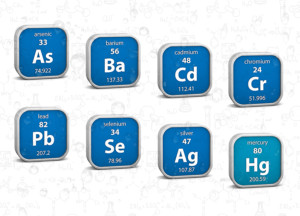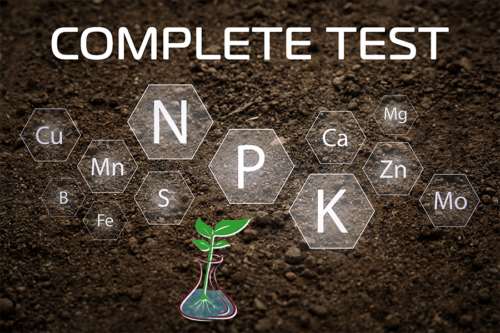Heavy Metals
Here you will find information for the heavy metals we test for when you purchase our heavy metals test package kit.
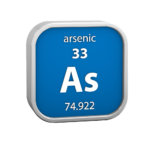 Arsenic
Arsenic
Arsenic is a naturally occurring element, but long-term exposure can cause cancer in people. There has been a substantial amount of research done to address arsenic in groundwater and drinking-water supplies around the country. The USGS studies local and national sources of arsenic to help health officials better manage our water resources.
Source: https://www.usgs.gov/mission-areas/water-resources/science/arsenic-and-drinking-water
Well water contaminated by natural sources such as bedrock containing arsenic has been reported to be the cause of arsenic toxicity throughout the world.
Areas in the United States with the highest natural groundwater concentrations of arsenic are the Southwest, Northwest, Northeast, Alaska, and other areas near geothermal activity.
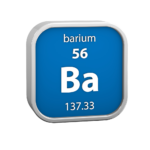 Barium
Barium
Barium is a silvery-white metal which exists in nature only in ores containing mixtures of elements. It combines with other chemicals such as sulfur or carbon and oxygen to form barium compounds.
Source: https://wwwn.cdc.gov/TSP/ToxFAQs/ToxFAQsDetails.aspx?faqid=326&toxid=57
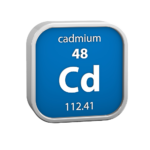 Cadmium
Cadmium
Cadmium, a rare but widely dispersed element, is found naturally in the environment. Most cadmium ore (greenockite):
- exists as cadmium sulfide,
- is refined during zinc production, and
- occurs in association with zinc.
It is released into the environment through mining and smelting, its use in various industrial processes, and enters the food chain from uptake by plants from contaminated soil or water.
Source: https://www.atsdr.cdc.gov/csem/cadmium/Where-Cadmium-Found.html
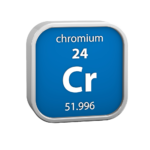 Chromium
Chromium
Electroplating, leather tanning, and textile industries release relatively large amounts of chromium in surface waters. Leaching from topsoil and rocks is the most important natural source of chromium entry into bodies of water. Solid wastes from chromate-processing facilities, when disposed of improperly in landfills, can be sources of contamination for groundwater, where the chromium residence time might be several years.
A survey conducted from 1974 to 1975 provides estimates of chromium concentrations in U.S. drinking water. The survey reported the concentration of chromium in tap water in U.S. households was from 0.4 to 8.0 micrograms per liter (µg/L). (EPA’s maximum contaminant level for chromium in drinking water is 100 µg/L.)
Source: https://www.atsdr.cdc.gov/csem/chromium/where_is_chromium_found.html
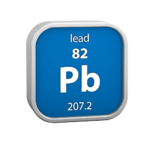 Lead
Lead
Lead occurs in drinking water through leaching from lead-containing pipes, faucets, and solder frequently found in the plumbing of older buildings.
- Homes built before 1986 are more likely to have lead pipes, fixtures, and solder, although newer homes may also be at risk if they are built in older neighborhoods (see below).
- “Lead service lines” (the water service pipes that connect the water main in the street or “public water main” to the household plumbing system can be made of lead) in the water supply systems of older neighborhoods can leach lead. Therefore, even if household pipes are replaced, there is still the possibility of receiving lead from “lead service lines”.
- “Approximately 7 percent of the homes connected to community water systems [in the United States] have a lead service line.” “There are about 15 to 22 million Americans nationally served by lead lines” [AWWA 2016].
- If “lead service lines” are replaced, but the household plumbing remains as galvanized iron pipes, there can still be ongoing lead exposure in drinking water.
- Corrosion build up on the inside of galvanized pipes can create the potential for lead to accumulate over time. Acidic water can contribute to the leaching of lead from pipes into the drinking water supply.
- Having a drinking water filtration system (filtered tap water/filtration pitchers) certified by an independent testing organization such as the National Sanitation Foundation (NSF) to remove lead can be a safe drinking water option when instructions on how to use, maintain, and/or replace filters are followed.
- Boiling water will not eliminate lead.
Other potential sources of lead contamination include [EPA 2016a; Mushak et al. 1989, as cited in AAP 1993]
- Brass fixtures (brass faucets or fittings),
- Copper pipes with lead solder for drinking water, and
- Older drinking water coolers and coffee urns.
EPA recommends replacing lead service lines, galvanized pipes or pipes that were soldered using lead, brass faucets/fittings, and the use of filtration systems for tap water [EPA 2016a].
Lead in water has not been identified as the major problem with lead in the United States. However, some areas of the country may have a serious problem with lead contamination in the drinking water distribution system.
Source: https://www.atsdr.cdc.gov/csem/leadtoxicity/lead_found.html
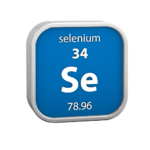 Selenium
Selenium
Selenium occurs naturally in the environment. Weathering of rocks and soils may result in low levels of selenium in water, which may be taken up by plants.
People are exposed to low levels of selenium daily through food, water, and air. Selenium is also an essential nutrient for humans and animals. However, selenium can be harmful when regularly taken in amounts higher than those needed for good health.
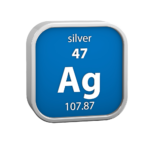 Silver
Silver
Silver is a naturally occurring element. It is found in the environment combined with other elements such as sulfide, chloride, and nitrate.1
Here are some long-term health effects of oral intake of silver according to a Mayo Clinic article 2 article:
- Seizures
- Blue-gray discoloration of the skin, eyes, gums, nails, and internal organs
- Organ damage
1 Source: https://wwwn.cdc.gov/TSP/substances/ToxSubstance.aspx?toxid=97
 Mercury
Mercury
Mercury is an element and a metal that is found in air, water, and soil. It exists in three forms that have different properties, usage, and toxicity. The three forms are called elemental (or metallic) mercury, inorganic mercury compounds, and organic mercury compounds.
Elemental mercury is liquid at room temperature. It is used in some thermometers, dental amalgams, fluorescent light bulbs, some electrical switches, mining, and some industrial processes. It is released into the air when coal and other fossil fuels are burned.
Inorganic mercury compounds are formed when mercury combines with other elements, such as sulfur or oxygen, to form compounds or salts. Inorganic mercury compounds can occur naturally in the environment. Inorganic mercury compounds are used in some industrial processes and in the making of other chemicals. Outside the United States, inorganic mercury salts have been used in cosmetic skin creams.
Organic mercury compounds are formed when mercury combines with carbon. Microscopic organisms in water and soil can convert elemental and inorganic mercury into an organic mercury compound, methylmercury, which accumulates in the food chain. Thimerosal and phenylmercuric acetate are other types of organic mercury compounds made in small amounts for use as preservatives.
Source: https://www.cdc.gov/biomonitoring/Mercury_FactSheet.html
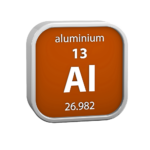 Aluminum
Aluminum
Aluminum is the most abundant metal in the earth’s crust and it is widely distributed.
Aluminum is a very reactive element and is never found as the free metal in nature. It is found combined with other elements, most commonly with oxygen, silicon, and fluorine. These chemical compounds are commonly found in soil, minerals (e.g., sapphires, rubies, turquoise), rocks (especially igneous rocks), and clays.
Aluminum as the metal is obtained from aluminum-containing minerals, primarily bauxite.
Aluminum metal is light in weight and silvery-white in appearance.
Sources
Aluminum occurs naturally in soil, water, and air.
High levels in the environment can be caused by the mining and processing of aluminum ores or the production of aluminum metal, alloys, and compounds.
Small amounts of aluminum are released into the environment from coal-fired power plants and incinerators.
Aluminum in Water and soil
The concentration of aluminum in natural waters (e.g., ponds, lakes, streams) is generally below 0.1 milligrams per liter (mg/L).
People generally consume little aluminum from drinking water. Water is sometimes treated with aluminum salts while it is processed to become drinking water.1 But even then, aluminum levels generally do not exceed 0.1 mg/L. Several cities have reported concentrations as high as 0.4–1 mg/L of aluminum in their drinking water.
Uses
Aluminum metal
Aluminum is used to make beverage cans, pots and pans, airplanes, siding and roofing, and foil.
Powdered aluminum metal is often used in explosives and fireworks.
Aluminum compounds
Aluminum compounds are used in many diverse and important industrial applications such as alums (aluminum sulfate) in water-treatment and alumina in abrasives and furnace linings.
Consumer products
Aluminum is found in consumer products including:
- antacids
- astringents
- buffered aspirin
- food additives
- antiperspirants
- cosmetics
High Risk to Dialysis Patients
Patients who need renal dialysis need to minimize their total aluminum levels as much as possible as dialysis is ineffective at removing this metal due to protein binding, leaving patients at a higher risk of aluminum toxicity.2
1 Source: https://www.ncbi.nlm.nih.gov/pmc/articles/PMC7037863/
2 Source: https://www.ncbi.nlm.nih.gov/pmc/articles/PMC8997989/
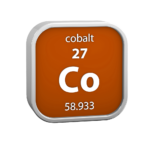 Cobalt
Cobalt
Small amounts of cobalt are naturally found in most rocks, soil, water, plants, and animals, typically in small amounts. Cobalt is also found in meteorites. Elemental cobalt is a hard, silvery grey metal.However, cobalt is usually found in the environment combined with other elements such as oxygen, sulfur, and arsenic. Small amounts of these chemical compounds can be found in rocks, soil, plants, and animals. Cobalt is even found in water in dissolved or ionic form, typically in small amounts. (Ions are atoms, collections of atoms, or molecules containing a positive or negative electric charge.) A biochemically important cobalt compound is vitamin B12 or cyanocobalamin. Vitamin B12 is essential for good health in animals and humans.
Cobalt may enter the environment from both natural sources and human activities. Cobalt occurs naturally in soil, rock, air, water, plants, and animals. It may enter air and water, and settle on land from windblown dust, seawater spray, volcanic eruptions, and forest fires and may additionally get into surface water from runoff and leaching when rainwater washes through soil and rock containing cobalt.
Plants can accumulate very small amounts of cobalt from the soil, especially in the parts of the plant that you eat most often, such as the fruit, grain, and seeds.

